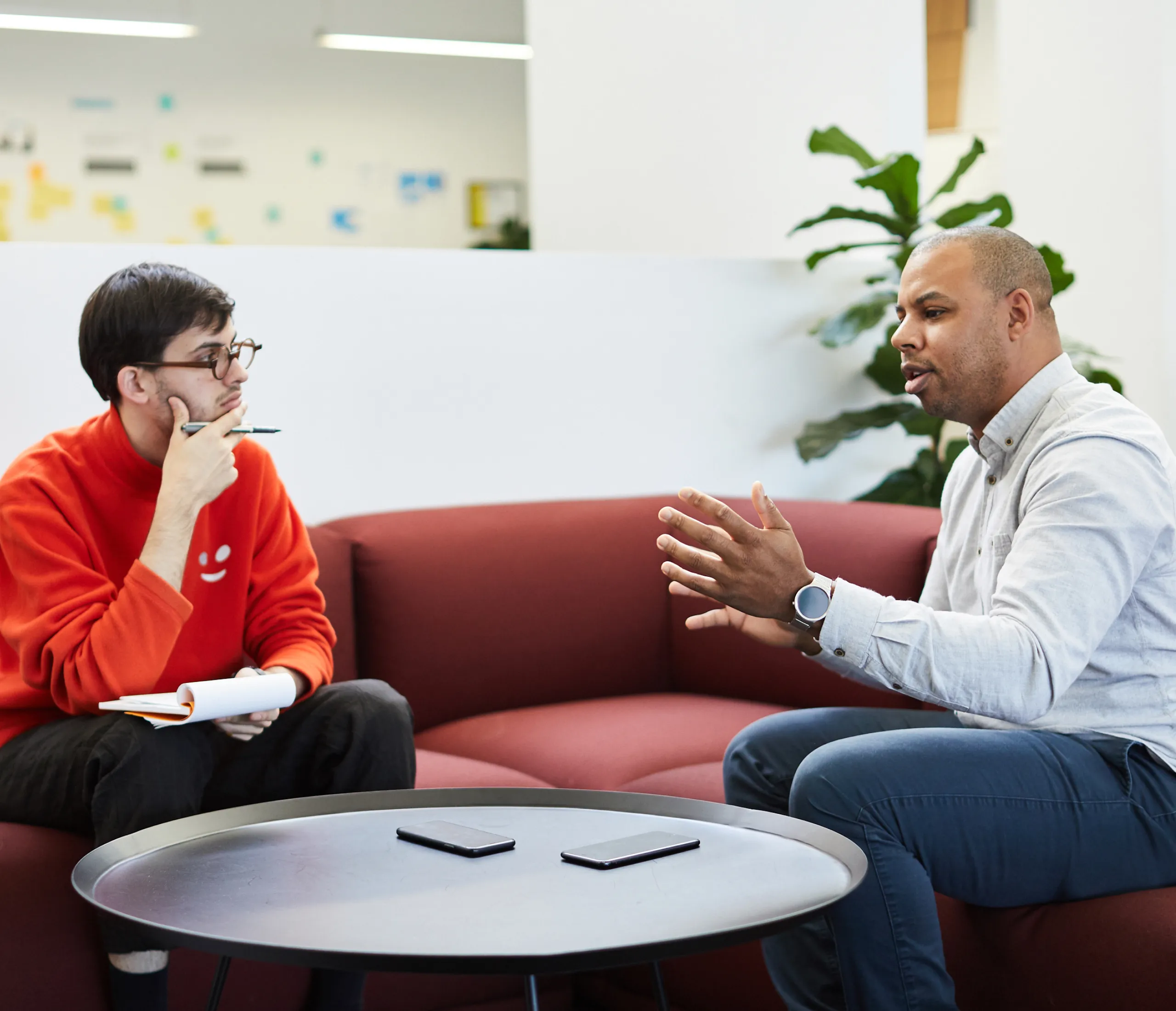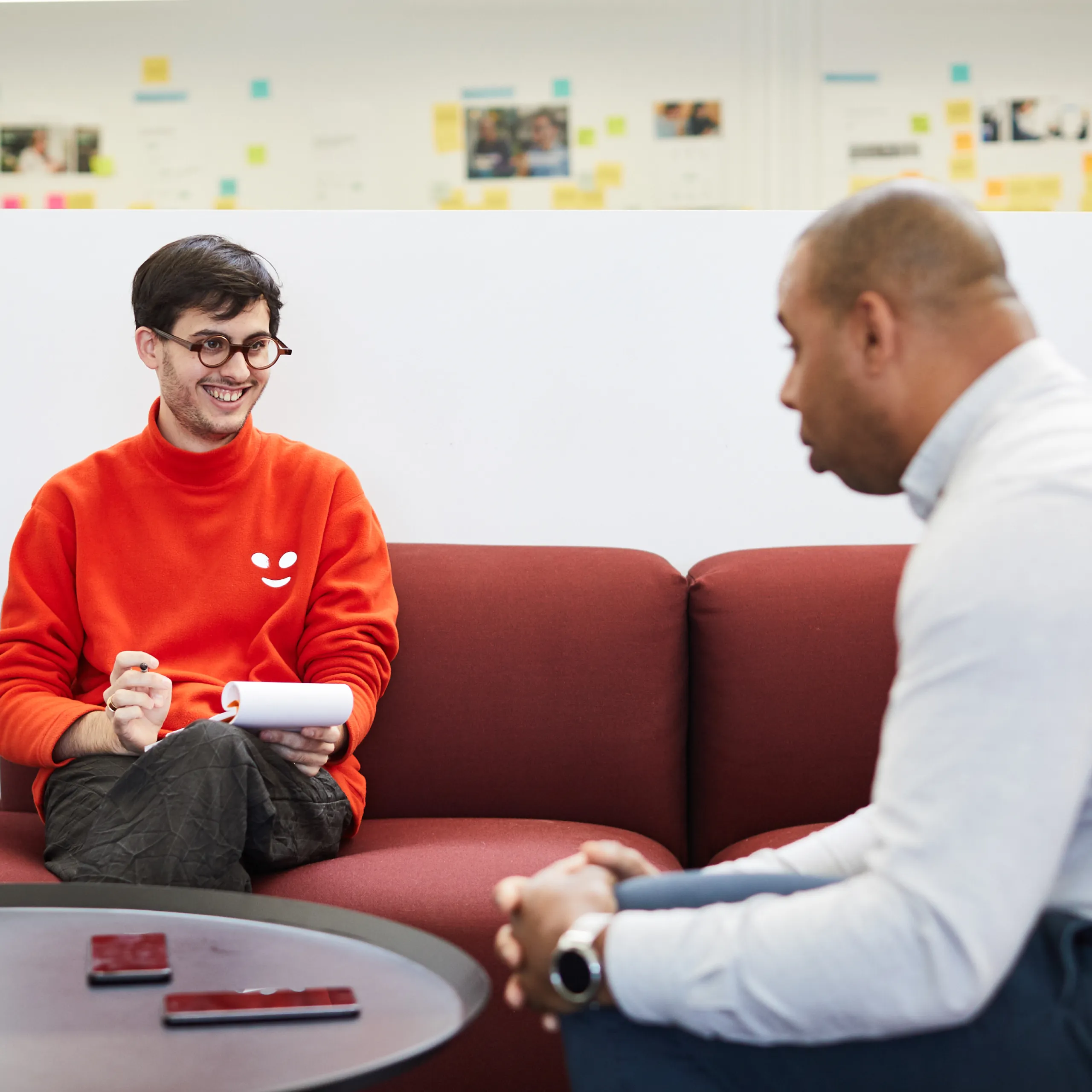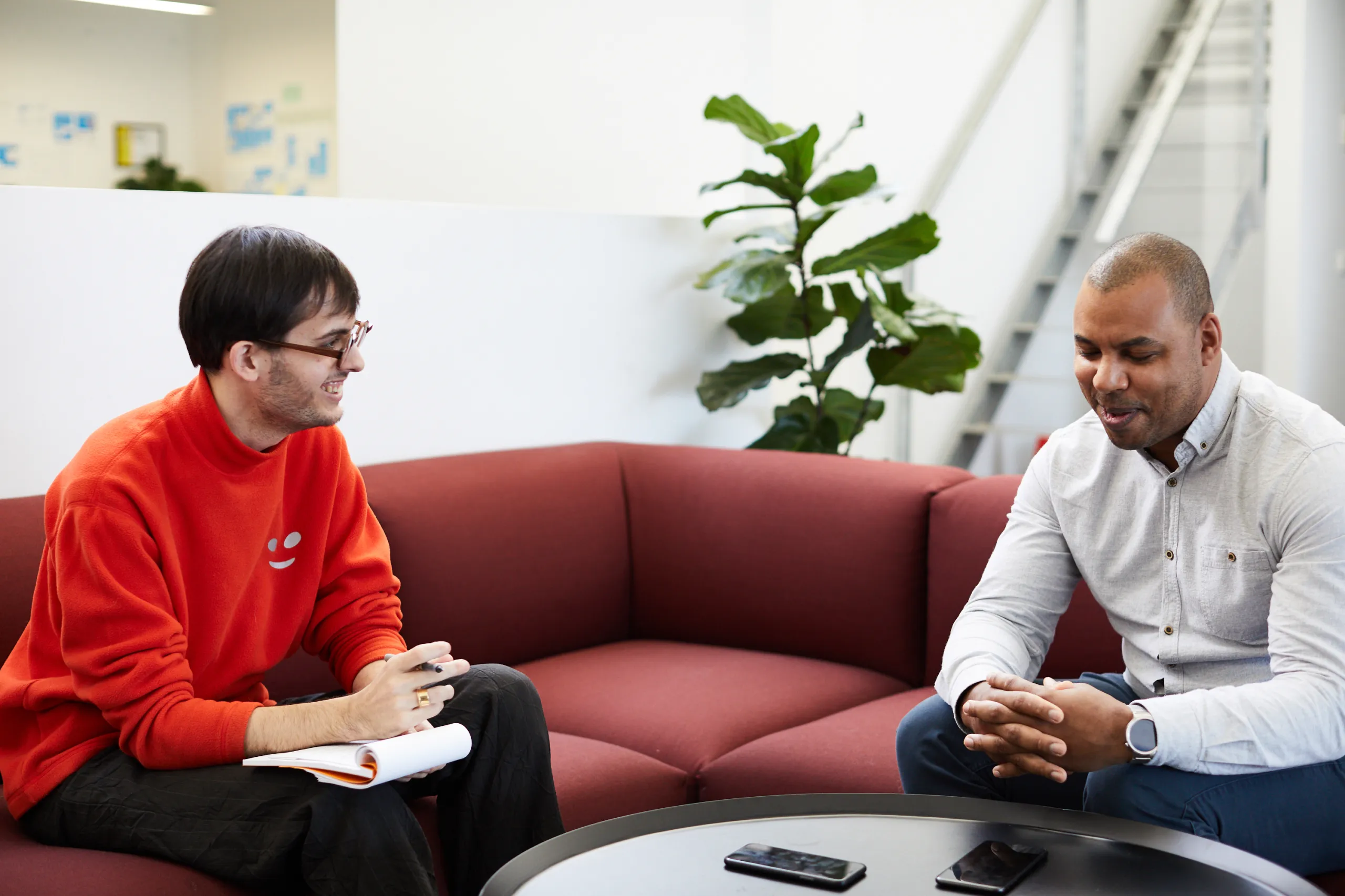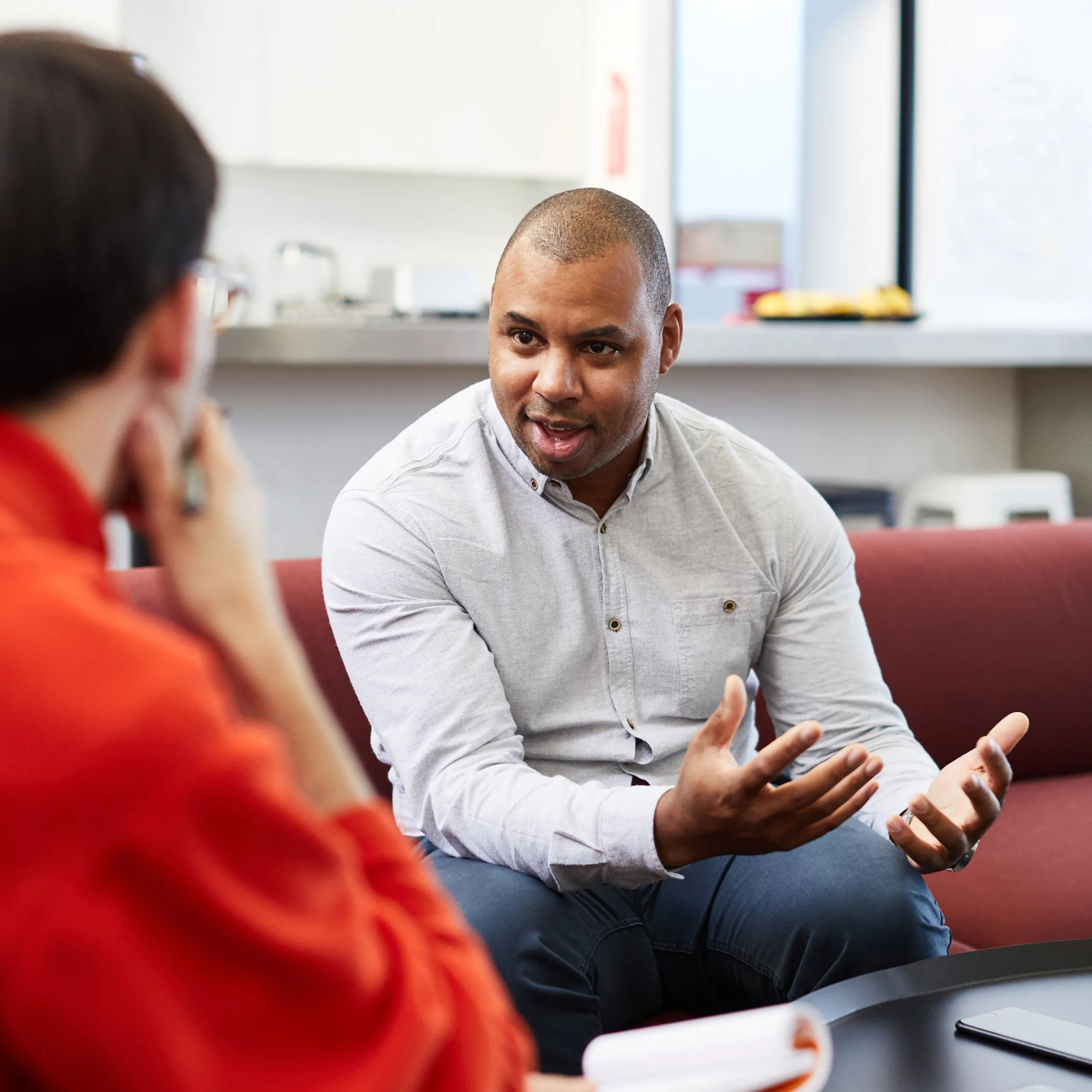We usually associate the word ‘innovation’ with digital technologies and shiny gadgets, but there is also a quiet revolution happening behind the scenes of government that is transforming the public services sector.
Richard Johnson, Principal Advisor for the Department of Health & Human Services in Victoria, is one of the people driving that change. Jacob Zinman-Jeanes, Design Director at Today spoke to him about his extensive experience in government innovation in Victoria and abroad, and how organisational transformation with a culture-first approach can deliver better results for the public.
In conversation
Jacob Zinman-Jeanes, Design Director at Today
Richard Johnson, Principal Advisor for the Department of Health & Human Services in Victoria

To get a better understanding of your current role and responsibilities, can you tell us a bit more about your background and your past experiences working on innovation in government?
Sure! Originally from London, I moved to Melbourne eight years ago. In the UK, I worked for the Home Office’s immigration department on a variety of innovative projects and programmes. Ten years ago there was a lot happening within the Home Office, especially since we had a change of government and a department that had to let go 6000 staff. So finding innovative ways to not only avoid a drop in our service standards but in many ways provide solutions for the Home Office to perform better was a big part of my role.
When I moved to Melbourne I was again fortunate enough to be able to work for The Department of Premier and Cabinet (DPC) here in Victoria, within the corporate development and strategic communications space. I also worked on refining and implementing the governance framework for the old Department of Economic Development, Jobs Transport and Resources. I know governance can sound quite boring, but we worked on a lot of innovative ways to gain assurance and oversight of the more than fifty agencies for the secretary of the department.
After that I had a fantastic opportunity to go back to DPC and work on and deliver MyVictoria to create what would be an Australian first, using fifty open data sets on a beautiful, reusable platform that gives small to medium businesses relevant place-based information in an easy to digest way.
Currently, I’m at the Department of Health and Human Services for Victoria doing Organisational Transformation where innovation plays a big part in finding new ways of working.
When we talk about innovation, most of us tend to think of shiny new technology, but what it really means is ‘how do we solve a problem in a new way’, right?
That's exactly right. And I think a good example is MyVictoria, a project that we engaged you, Today, to help deliver. That was my first taste of being really free to build a team and create something innovative, to assemble the right team that makes something complex easy to use and visually appealing.
My current work at The Department of Health and Human Services is about innovation but, as you said, it doesn’t necessarily have anything to do with fancy new gadgets. It’s about working with people and ensuring they perform at their maximum potential, while allowing them the space to be creative to deliver a vision.
Loads of people come up with innovative ideas, but the question is: do you actually have the right environment to deliver innovation in a meaningful way? Is everyone brought into the journey? Understanding that environment is really important to delivering innovation, especially in government.
It sounds like managing people is one of the crucial factors in innovation.
Honestly, I think it's the most important one. You need strong leadership to allow ideas to flourish. To use the example of MyVictoria again, I think what made that project successful was the fact that we worked as one team. There wasn’t this person from Today and this person from the Victorian government. The attitude was: we’re one and the same team, so let’s share these ideas. Let’s create this underpinning culture and environment that makes this relationship flourish and leads to a great outcome.
There's a certain level of risk appetite that keeps changing depending on the environment you’re in. As a leader it’s about understanding that appetite, and making a good judgement call so that people can go off and figure things out on their own. Government is not an environment where you can keep asking other people, ‘Can you help me solve this problem?’ You also can’t keep asking for permission to get things done.
It’s important to give people the room to make mistakes and explore different avenues for innovation. It's okay to ‘fail fast’, so go off, implement whatever you need to implement. We trust your intent and we trust you to get the job done. Some of the best advice I've been given is to just do what needs doing and ask for forgiveness later if it fails.
Strong leadership is about giving people the room to operate. And, of course, it’s about trust. Without having a good rapport and without a certain level of respect that goes both ways, the chances of a project being successful are slim to none. I think we are naive if you we think that just technical ability alone gets results and fosters innovation.

In your experience, what are some other aspects that lead to a successful project delivery when it comes to working with external parties, such as ourselves?
Trusting the process. As you would know working with the team at DPC, if you're running a really lean, agile project, there often isn't that much documentation that’s created. We need to be able to trust the vendor to go off and spend their hours building the solution and not creating documentation that talks about building the solution. Recognising that vendors like yourself have jumped through a lot of hoops in terms of procurement so that the documentation to deliver a project can be quite light.
On the other hand, as a vendor you understand that you’re working in a pretty complex environment that requires a certain level of governance oversight. So we need you to stick to a certain reporting process that saves everyone time, helps us to provide assurance and give management the confidence that the resources are used in the right way.
I think everyone has seen their fair share of government projects go awry. What do you think are the leading factors for projects to fail?
It’s often a mix of a lack of experience, a lack of capability and a lack of understanding the environment you operate in. But I've got to say, government overall is continually getting better at delivering products that are meaningful and useful.
Going back to the MyVictoria example once again, we created what we called a ‘Minimum Lovable Product’ that allowed all of our stakeholders to not just have a basic, functional product but a product they really enjoy using. In government, there is an expectation by the general public that our services will perform at a high standard. The typical MVP (Minimal Viable Product) approach in software development often falls short because it’s too basic and not user-friendly enough for the diverse audience it’s meant to serve. Funding is iterative so I think that’s a real risk for many projects and products and is sometimes the reason why they are perceived as ‘failures’ in the public eye.
With MyVictoria and other projects that I've worked on recently, we spent a lot more time in that co-design phase and working with the vendor and recipients of the product, trying to fully understand the problem first to determine the threshold where a product becomes really useful. I think in the past this usefulness threshold has never really been considered; it was more about shipping and getting the MVP out on time. But you can always build at speed. You first need to know what you’re actually trying to achieve, then execute quickly.
You've worked across public service in the UK and Australia. What are some of the similarities and differences that you've noticed in regards to leading innovation programs?
It’s worth noting that it’s been quite a few years since I worked for the UK government. Things have certainly changed in the meantime. With that in mind, I think at the time I worked in the UK we had a lot of data to support their innovation programs and that made the investment conversation slightly easier. Australia has used other levers to promote innovation but has since caught up on the data front and I think today we’re seeing innovation backed by data being embraced a lot more. Of course, these days the expectation is a lot higher too. We should be able to do more. It’s what the public expects and I see a lot more collaboration and innovative ideas to produce better government services.
One thing I like about working for government in Australia is that there is more freedom to go and get the job done. In the UK, there were always a hundred and one governance processes I had to work through to make things happen. Back then this idea of an agile project was still very new and existing processes often didn’t really allow for it.
In terms of similarities, government has to move a lot more quickly these days. Sure, ‘agile’ is a buzzword, but it really best describes the attitude required to deliver projects successfully and at a pace that is expected by the public. If you start a two-year project and still deliver it through that classic waterfall approach, it might be out of date a year in and therefore useless when you get to the end of it. I think that's one of the things governments, no matter where, are still struggling with: employing an agile mindset means that someone at a senior level has to be comfortable with those working at the coal face making important decisions and making them fast.
If you start a two-year project and still deliver it through that classic waterfall approach, it might be out of date a year in and therefore useless when you get to the end of it.

That’s an interesting aspect to the agile mindset. You need to be able to mesh people from different roles and levels and trust that you end up with something that’s greater than the sum of its parts. It’s about valuing and managing different input at different stages of the project, isn’t it?
That’s right. I think with MyVictoria, we spent a lot of time working out how to best interact with each other. For example, how do you get a developer with a certain personality type, who might be quite insular, to share their ideas openly within the group. It’s important to clearly state at the beginning that their points of view are as valid as someone in another role or further up the management chain. In a similar vein, there’s always a risk of leaders or strong personality types to dominate the room, making it less likely for a diverse range of views and feedback to come to the surface. Establishing how you’re going to interact as a team is absolutely essential and underpins successful delivery.
This also applies to external stakeholders, of course. With MyVictoria we actually had dedicated engagement and communications staff that spent a lot of time talking to small businesses and peak bodies that support small business to ensure that everyone felt heard and to let them know that we’re on this journey together. Sometimes that meant that we had to set up a meeting just to say, ‘We’re here. We’re listening. We haven’t built this thing yet but we’re here to ask for your opinion on how it can best provide value to you. Here’s our number and you can call us any time.’
In that way, MyVictoria was quite exemplary for how to build relationships and establish a reliable, honest communication channel between all stakeholders.

Yeah, to be honest, seeing projects like MyVictoria being executed successfully gives me hope that change in difficult, complex environments really is possible.
Totally. Again though it is more than just having the right skills on hand. Working on MyVictoria actually resulted in a Whatsapp group that’s still active today. We use it to check in with each other and organise the occasional lunch catch-up to celebrate everyone's continued success, professional and private. There is a real sense of connection because of these shared ideas and the work we’ve done. It’s an experience that binds us together. It’s not contrived in any way, it just happened organically.
I believe once you have found really good people and the right environment, you need to hold on to that as much as possible. You know, the relationship between government and a vendor, for example, doesn’t have to be purely transactional. When you both believe in finding new ways to solve a problem, I think it’s a connection worth nurturing.
In the end, it comes down to culture, environment, trust, and leadership. And I would put those things far above the technical abilities necessary to deliver a project. Focus on people and the rest falls into place.
